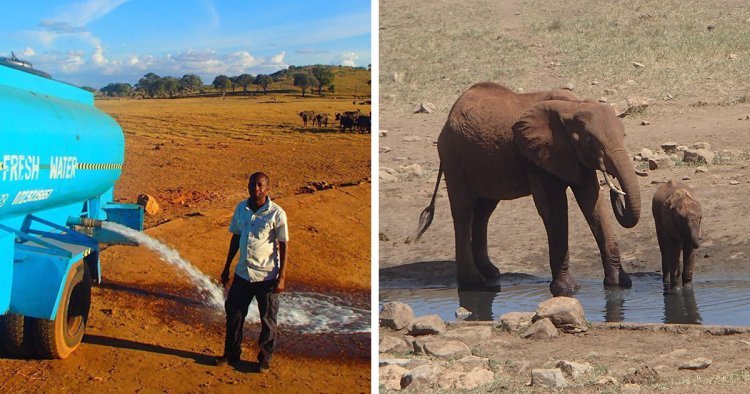"Gurugram Wildlife Thrives: Thanks to Refilled Dry Aravalli Ponds!"
In Gurugram, wildlife faces a dire situation as dry Aravalli ponds leave them thirsty. However, thanks to the proactive efforts of the Gurugram wildlife department, these ponds have been refilled, providing a much-needed source of water for the animals.
Dry Aravalli Ponds Refilled for Animal Watering: Gurugram Wildlife Department
The Gurugram wildlife department announced on Thursday that they have installed about 300 feet of pipeline to provide water to wild animals like leopards, jackals, foxes, and porcupines in the Aravallis near Khod village, Sohna. This effort aims to reduce man-animal conflicts and help the animals cope with the harsh summer.
Water Source Restoration in Khod
Villagers had complained about leopards entering residential areas at night searching for water. Rajesh Chahal, a wildlife inspector, said leopards might have entered the villages because the natural water sources in the Aravallis had dried up.
“We checked the water sources and found they were all dry. We started refilling these ponds and laying pipelines to provide a steady water supply for the wildlife. This project ensures that wild animals have enough water in their natural habitat, reducing human-wildlife encounters,” said Chahal.
A thorough survey is also being done to evaluate the status of natural water sources in the Aravallis. “This survey will find and restore other potential water bodies to help wildlife, preventing them from looking for water in areas where people live,” Chahal added.
Officials are using three tankers of 12,000 liters and six tankers of 2,000 liters every day to refill water in the region, with locals helping to monitor the situation.
The department created 60 ponds in the Faridabad, Gurugram, Nuh, Rewari, and Mahendragarh districts in 2021. “These ponds are designed like pans, without concrete sides, making it easier for animals to drink. They are being replenished with tankers,” an officer said.
Mining pits have also been developed as water sources, with trails for animals to reach them.
Officials noted that water sources dry up every summer, increasing the chance of animals wandering into human areas. Previously, villagers manually refilled tankers to supply water.
The decision to lay pipelines aims to address this issue more efficiently. The pipelines are specially designed to supply water to critical points at a height.
Satyaparkash Singh, the sarpanch of Khod village, said they ensure enough water is stored on the village outskirts for the wildlife. “The recent temperature rise has increased water demand, causing wild animals to enter the village. We have stored enough water at various points outside the village. With the new pipeline, we can ensure a consistent water supply for the wildlife. Young men in the village are tasked with checking and refilling these water points daily,” said Singh.
What's Your Reaction?
























